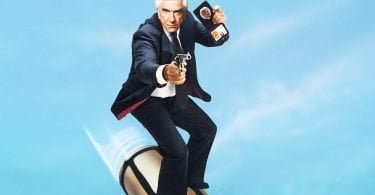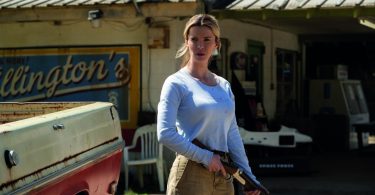The East emerges at a very poignant stage in 2013’s international community.
The East emerges at a very poignant stage in 2013’s international community. With news outlets focusing on the NSA whistle blower Edward Snowdon, so cinemas are treated to the exploits of “The East,” an anarchist organisation aimed at the Multinational Corporation.
The Corporation, and its structure, is seen by Directors Batmanglij and Marling as: “outside of the purview of any nation-state. These are the entities that are shaping and running the world.”
The film is seen through the eyes of Sarah Moss, an undercover operative at a private security firm under the guidance of Sharon, played to an enticing mix of strength and ruthlessness by Patricia Clarkson. The film opens to a variety of images relating to an oil CEO being attacked by the group, a scene that not only frames the East, yet provides a look at the ease of controlling the media, all from the views of the counter culture.
A highly spirited opening act
The opening act sees Moss exploring the deep roots of the freeganism movement, eating discarded food, riding the rails, all the while portraying a deeply homely existence spaced in traditional Americana. The east presents a highly spirited opening act, which soon dwindles to an ember, unable to cope with the pace of Moss repeatedly entering and exiting each presented world.
The first and most striking of these worlds is location of The East’s hiding spot, a Washington Gothic mansion surrounded by hearty woodland. The backdrop of an aged American squalor provides the stage in which the East interacts as a group, yet as a group, often, they fail to interact. The ten or so characters that make up the east are introduced, yet are never revisited in any format.
Middle classes lash out
Some are left totally ambiguous, whilst those that are all credit familial and private bonds as reasons to attempt to change the public sphere. The East comes across merely as Tyler Durden’s middle children of history—middle class twenty something’s scolded by the system, and attempting to lash out. Desperate violence is portrayed at the public world, for its affects upon the private. This violence presents an important question, regarding the few and the many.
What if two wrongs could make a right? The first of the three “jobs” enacted by The East is easily the most understandable. A doctor left disabled by prescribed medication enacts revenge on the pharmaceutical world, exposing the question of the “miracle drug” craze. A quietly and affectionately played character, Doc emerges as Moss’ and the audience’s first litmus test into the ego of eco terrorism, to strike merely to feel something. It is frustrating to see each character slowly lose limelight, all the while leading to a broken ending. Moss emerges the only character explored, and even she is left to the audience.
A broken ending
The Leader of The East, “Benji,” is presented as a leader in strife, with the burdens of seeing the existing corporate framework, whilst also dealing with the reactions of community he himself created. There is a rare playfulness to actor Alexander Skarsgård, notably in his portrayal of Brad Colbert in Generation Kill, which is sadly pushed idly by in favour of an intimate focus. His character, whilst fraught, is never given the degree of full exploration of a leader in his position, as his character ultimately fades into the background, seemingly faltered by his ready inability.
It is exciting to see the cinema explore the motives behind the individual faced with the decision to abscond from the system. The East however showcases only two choices for this individual, sanctioned violence or ideological campaigning, each of which is shown as morally or physically flawed.
In a nutshell:No doubt a work of topical relevance, The East as a movement struggles to respond to the attacks on the self by the CEO. The East as a film struggles to equate this response.
What do you think? Is The East a film worth seeing? Have your say in the comments section below, on Facebook or on Twitter.
Photo: Gage Skidmore








